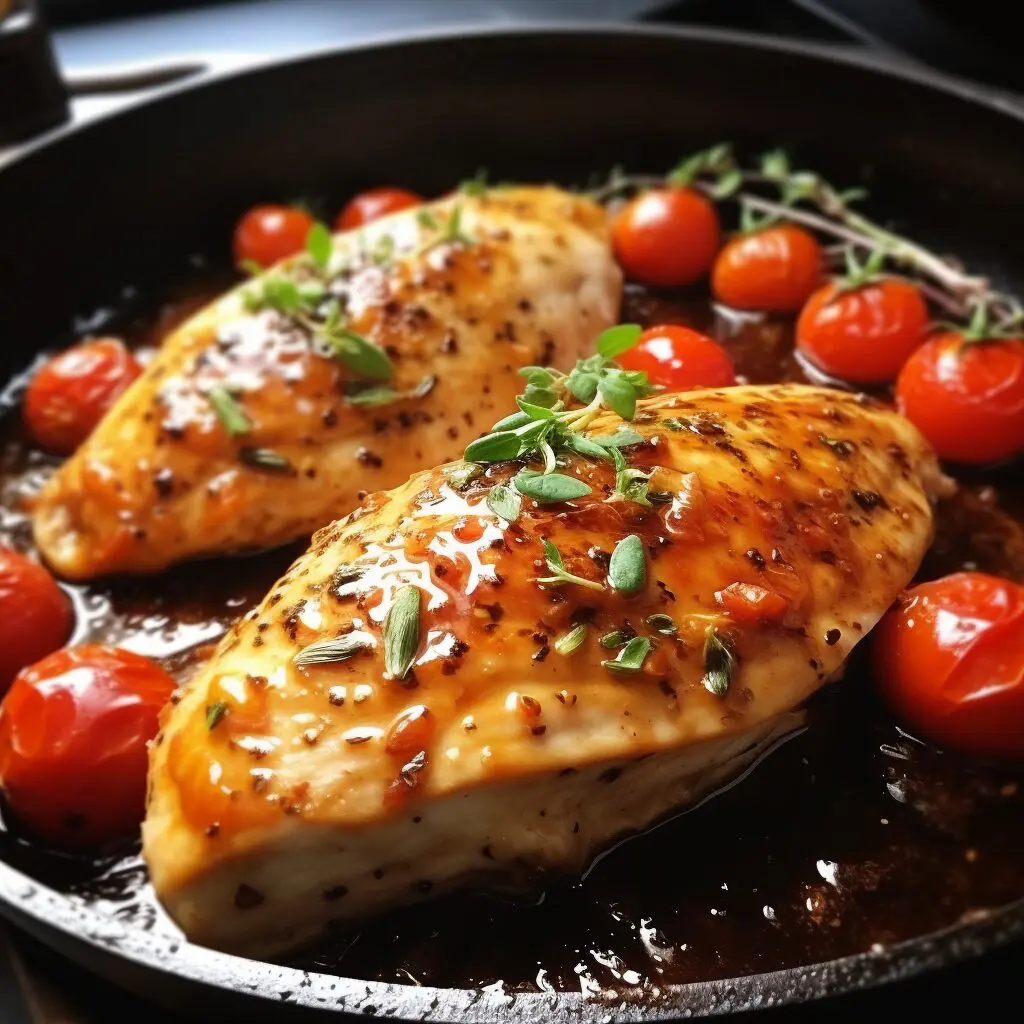Chicken breasts are a delicious and versatile staple in many kitchens. However, a common mistake can transform them from a juicy delight to a dry disappointment. But fear not! We’re here to guide you through the art of cooking chicken breasts that are moist, flavorful, and far from tragic.
The Mistake: Overcooking
The main culprit behind dry, tasteless chicken breasts is overcooking. Many people fall into the trap of leaving their chicken in the oven or on the stovetop for too long, due to fear of undercooking and potential food safety issues.
However, when chicken breasts are cooked for an extended period, they lose their natural juices, becoming dry and tough. This common mistake can easily ruin your dinner, but it’s not irreversible.
Tip: Instead of relying on cooking time alone, use a meat thermometer to check the internal temperature. The chicken is done when it reaches 165°F (74°C). You can find quality meat thermometers here.
The Solution: Proper Cooking Techniques
Overcoming the overcooking mistake requires a combination of proper cooking techniques and tools. By learning how to regulate temperature and manage cooking time, you can prepare chicken breasts that are juicy and tender.
One effective method is to sear the chicken breasts in a heated pan before transferring them to the oven to finish cooking. This allows the chicken to develop a delicious crust while maintaining its internal moisture.
Tip: Use an oven-safe skillet for seamless transfer from stovetop to oven. These versatile pans can be found here.
The Enhancement: Brining
Another technique to ensure moist and flavorful chicken breasts is brining. This process involves soaking the chicken in a solution of salt and water, which helps to retain moisture during cooking.
The salt in the brine breaks down the proteins in the chicken, enabling it to absorb more water. This results in chicken breasts that are juicy and flavorful, even if they are slightly overcooked.
Tip: To brine chicken breasts, dissolve ¼ cup of salt in 4 cups of water. Soak the chicken in the brine for at least 15 minutes before cooking.
In conclusion, achieving perfectly cooked chicken breasts is a matter of avoiding overcooking, using proper cooking techniques, and enhancing the flavor and moisture content through brining. Say goodbye to dry, tasteless chicken and hello to juicy, flavorful meals!
Juicy Oven-Baked Chicken Breasts
Course: MainCuisine: American4
servings15
minutes20
minutes165
kcalA foolproof recipe for succulent, perfectly cooked chicken breasts.
Ingredients
4 boneless, skinless chicken breasts
¼ cup salt
4 cups water
2 tablespoons olive oil
Salt and pepper to taste
Directions
- Combine ¼ cup of salt with 4 cups of water in a large bowl. Stir until the salt is dissolved. Add the chicken breasts and let them sit in the brine for at least 15 minutes. Preheat your oven to 400°F (200°C).
- After 15 minutes, remove the chicken breasts from the brine and pat them dry with a paper towel. Season both sides with salt and pepper. Heat an oven-safe skillet over medium heat and add the olive oil. Once the oil is hot, add the chicken breasts and sear them for 2 minutes on each side.
- Transfer the skillet to the preheated oven and bake for 10 minutes, or until the internal temperature of the chicken reaches 165°F (74°C). Use a meat thermometer to check. Once done, let the chicken rest for a few minutes before serving.
Notes
- Ensure the chicken is fully submerged in the brine.
- Do not reuse brine.
- If you don’t have an oven-safe skillet, you can transfer the seared chicken to a baking dish instead.
Frequently Asked Questions
Q: Can I brine chicken for too long?
A: Yes, if chicken is left in the brine for too long, it can become overly salty and the texture may become mushy.
Q: Is brining necessary for this recipe?
A: While not strictly necessary, brining is a simple and effective way to ensure your chicken breasts remain moist and flavorful during cooking.
Q: Can I use this cooking method with other parts of the chicken?
A: Yes, this method can be used with other parts of the chicken, but cooking times may vary.
Q: Why should I let the chicken rest before serving?
A: Resting allows the juices to redistribute throughout the chicken, resulting in a more moist and flavorful dish.


